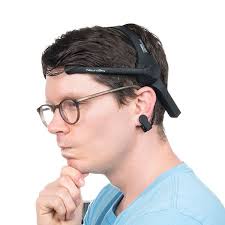
Breaking News
 A NEW Issue?! Battleborn Cycle Testing!
A NEW Issue?! Battleborn Cycle Testing!
 Erika Kirk Goes All In -- TPUSA Leader Endorses VP J.D. Vance for President in 2028 Election
Erika Kirk Goes All In -- TPUSA Leader Endorses VP J.D. Vance for President in 2028 Election
 (VIDEO) Ro Khanna Says He and Thomas Massie May Bring Articles of Impeachment Against Bondi...
(VIDEO) Ro Khanna Says He and Thomas Massie May Bring Articles of Impeachment Against Bondi...
 The Great Digital Dollar Switcheroo
The Great Digital Dollar Switcheroo
Top Tech News
 Perfect Aircrete, Kitchen Ingredients.
Perfect Aircrete, Kitchen Ingredients.
 Futuristic pixel-raising display lets you feel what's onscreen
Futuristic pixel-raising display lets you feel what's onscreen
 Cutting-Edge Facility Generates Pure Water and Hydrogen Fuel from Seawater for Mere Pennies
Cutting-Edge Facility Generates Pure Water and Hydrogen Fuel from Seawater for Mere Pennies
 This tiny dev board is packed with features for ambitious makers
This tiny dev board is packed with features for ambitious makers
 Scientists Discover Gel to Regrow Tooth Enamel
Scientists Discover Gel to Regrow Tooth Enamel
 Vitamin C and Dandelion Root Killing Cancer Cells -- as Former CDC Director Calls for COVID-19...
Vitamin C and Dandelion Root Killing Cancer Cells -- as Former CDC Director Calls for COVID-19...
 Galactic Brain: US firm plans space-based data centers, power grid to challenge China
Galactic Brain: US firm plans space-based data centers, power grid to challenge China
 A microbial cleanup for glyphosate just earned a patent. Here's why that matters
A microbial cleanup for glyphosate just earned a patent. Here's why that matters
 Japan Breaks Internet Speed Record with 5 Million Times Faster Data Transfer
Japan Breaks Internet Speed Record with 5 Million Times Faster Data Transfer
Thought Operated Random Access Memory Prototype for Implantable Memory Devices for Less Than $200

His new research is thought operated digital random access memory
Thought-Operated Digital Random-Access Memory by Lee Ben-Amil and Ido Bachelet.
The capacity and reliability of biological memory could be exceeded by a constantly growing flux of information to remember and operate by. Yet, our memory is fragile and could be easily impaired, and the prevalence of memory disorders is increasing in correlation with the population's mean age. As expected, auxiliary memory devices (such as writing pads and computers) are abundant but are operated indirectly using significant effort compared with biological memory. We report a working prototype of a simplified, 4 KB random-access memory (RAM) that can be written to or read from using thought and could be embedded more seamlessly than other artificial memory aids. The system analyses EEG signals to extract attention levels, which trained subjects can use to write messages into an RFID sticker, or read from it on a display. We describe basic modes of using memory by a single subject, emulate common forms of social communication using this system, and highlight new forms of social usage and allocation of memories that are linked to specific persons. This preliminary prototype highlights the technical feasibility and the possibilities of implantable thought-operated memory devices and could be developed further to provide seamless aid to people suffering from memory disorders in the near future.

 Advanced Propulsion Resources Part 1 of 2
Advanced Propulsion Resources Part 1 of 2

